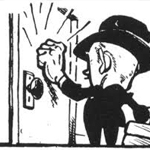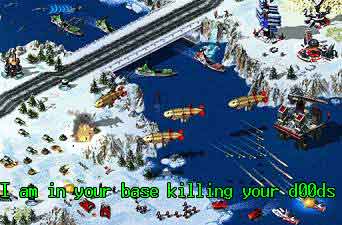There are a lot people working in the guru space, who are promising miracles for other businesses. “Do what I say and literally overnight your business will be transformed, made over and you’ll be on easy street.”
There is a reason these sales pitches are used – they work. I know how they work, I can even dissect how they work in gory detail for you. If you are gullible enough to believe them, I have the Brooklyn Bridge, The Eiffel Tower and a money-printing machine you might like to buy (The money printing machine isn’t as much of a stretch as the other two…)
And I probably should do a webinar series on biz-op level selling techniques and why they are so damn effective on that crowd.
However, once you get behind the curtain you’ll see the truth. The turnaround promised is often not as effective as you might be led to believe. They can happen but if you could actually get an idea of their track record – their strike rate, you might be disappointed.
After all, nobody offers up testimonials from businesses and business owners that fail. Nobody boasts about the number of pissed off customers. (There is a shadow Facebook group devoted to people ‘scammed’ by a leading Australian Business Guru. Buyer beware.)
Nobody in this guru game is going to do otherwise. Otherwise, everyone might see that the emperor’s clothes are not what he thinks they are. I will say that the emperor has clothes – it’s never a total fabrication. Those people tend to get exposed as charlatans.
The Real Truth.
There is no one magic potion, cure all fix in business. Every business is actually unique and is held back by different things and some business are better at solving certain problems than others. Different gurus have different skills and are better equipped to solve certain problems. Allowing your business to grow.
Through Newsletter Marketing Systems, Ben and I can work with businesses that are operationally sound, want to sell more, have clients that are worth keeping but aren’t being monetised fully. Our skills mean we also create more customers for a business.
Can we make every business owner rich? No. If you add our skills to a transactional business it is less likely we would help. If you have ‘bad math’ in your business we might make things worse for you and if you can’t deliver what you sell (or have a bad product) we would almost certainly send you broke.
Beware of the pitches promising a breakthrough. In our world there are two levels of selling to business – ‘opportunity level’ and ‘business how to’ level. The opportunity level sell is about how to get rich in 30 days guaranteed. The business ‘how to sell’ is about how to take advantage of another opportunity in your business.
The choice is yours.
 Business
Business Fresh out of university I started my ‘career’ in direct sales.
Fresh out of university I started my ‘career’ in direct sales. Why every business person should be familiar with “I am in Your Base Killing YOUR D00dz (dudes).”
Why every business person should be familiar with “I am in Your Base Killing YOUR D00dz (dudes).” From time to time when talking to potential clients about the suitability of them doing a newsletter, Ben and I are often left wondering what the costs of not doing a newsletter are for the client.
From time to time when talking to potential clients about the suitability of them doing a newsletter, Ben and I are often left wondering what the costs of not doing a newsletter are for the client. This month we have been blessed to welcome aboard two new clients, one of those is Pieter Berkelaar who runs WA Print Works (a commercial print shop out of Albany in WA). Because Pieter has all the facilities to print and distribute his own newsletter each month, we just assist with the writing, design and strategy.
This month we have been blessed to welcome aboard two new clients, one of those is Pieter Berkelaar who runs WA Print Works (a commercial print shop out of Albany in WA). Because Pieter has all the facilities to print and distribute his own newsletter each month, we just assist with the writing, design and strategy.
